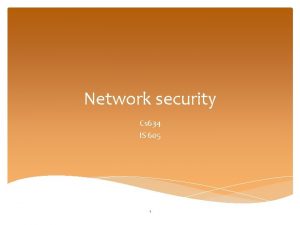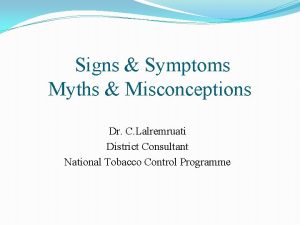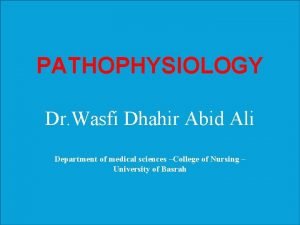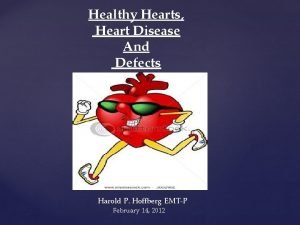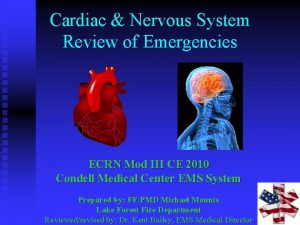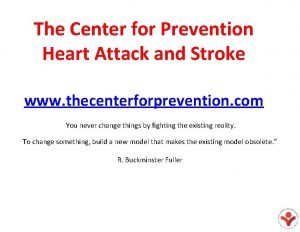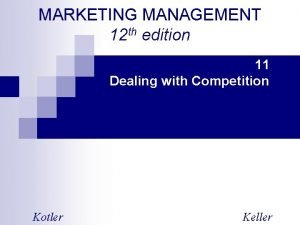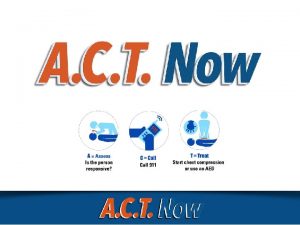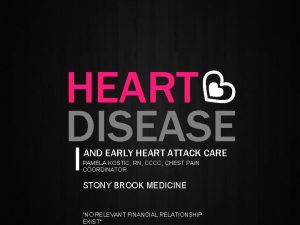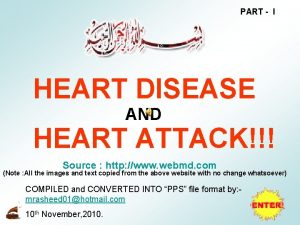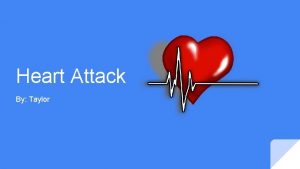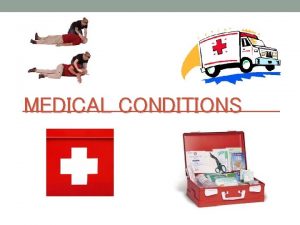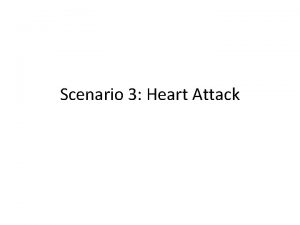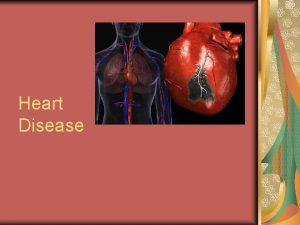Heart Attack Heart attack A heart attack is













- Slides: 13

Heart Attack

Heart attack • A heart attack is life-threatening. If you think you or anyone else is having a heart attack, you should call hospital immediately.

• A heart attack happens when your heart muscle is starved of oxygen-rich blood. This causes damage to your heart muscle.

• Make sure you know the signs and symptoms of a heart attack and don't delay getting help.

The signs of a heart attack • Heart attack symptoms vary from one person to another. The most common signs are: • chest pain: tightness, heaviness, pain or a burning feeling in your chest • pain in arms, neck, jaw, back or stomach: for some people, the pain or tightness is severe, while other people just feel uncomfortable • sweating • feeling light-headed • become short of breath • feeling nauseous or vomiting

• You should then sit and rest while you wait for the ambulance to arrive. Do not get up and look around for an aspirin. This may put unnecessary strain on your heart.

• A heart attack happens when there is a sudden loss of blood flow to a part of your heart muscle. Most heart attacks are caused by coronary heart disease.

What causes a heart attack? • Most heart attacks are caused by coronary heart disease. Coronary heart disease (CHD) is when your coronary arteries (the arteries that supply your heart muscle with oxygen-rich blood) become narrowed by a gradual build-up of fatty material within their walls. • If a piece of this fatty material (atheroma) breaks off it may cause a blood clot (blockage) to form. If it blocks your coronary artery and cuts off the supply of oxygen-rich blood to your heart muscle, this is a heart attack.

How is a heart attack diagnosed? • When the ambulance arrives, the ambulance staff will; • examine you and monitor your heart rate and blood pressure, • do an electrocardiogram (ECG) in the ambulance, • assess your symptoms and medical history, • give pain relief if needed and oxygen if your oxygen level is too low, • give you aspirin if not given already, • transfer you to the most suitable hospital.

How is a heart attack treated? • When you arrive at hospital you will receive treatment for your blocked artery. Or you will have Thrombolysis, also called a ‘clot buster’. This involves injecting a medicine into a vein to dissolve the blood clot and restore the blood supply to your heart. Sometimes this may be given to you in the ambulance

What happens to my heart after a heart attack? • A heart attack always causes some permanent damage to your heart muscle, but the sooner treatment is given, the more muscle it is possible to save. • If a heart attack damages a significant amount of your heart muscle, this can affect the pumping action of your heart. The term used to describe this is heart failure.

Heart attack prevention • Living a healthy lifestyle can help prevent you from developing coronary heart disease and having a heart attack.

What about recovery? • A heart attack can be a frightening experience and it can take time to come to terms with what has happened. It's natural to be worried about your recovery and future. • Many people make a full recovery and within a few months are able to return to their normal activities. However some people may find that they are not able to do as much as they previously did. Attending a cardiac rehabilitation course will increase your chances of getting back to normal as quickly as possible.
 Active attack and passive attack
Active attack and passive attack Is 605
Is 605 Mark virkler heart attack
Mark virkler heart attack Anxiety lan chhuah dan
Anxiety lan chhuah dan Abid ali heart attack
Abid ali heart attack Harold heart attack
Harold heart attack Risk heart attack
Risk heart attack Widowmaker heart attack smoke inhalation
Widowmaker heart attack smoke inhalation Fake heart attack medical report sample
Fake heart attack medical report sample Sheep heart diagram
Sheep heart diagram Hrt 2 hrt
Hrt 2 hrt Dullness to percussion
Dullness to percussion Bypass attack strategy
Bypass attack strategy Johnny tables xkcd
Johnny tables xkcd

